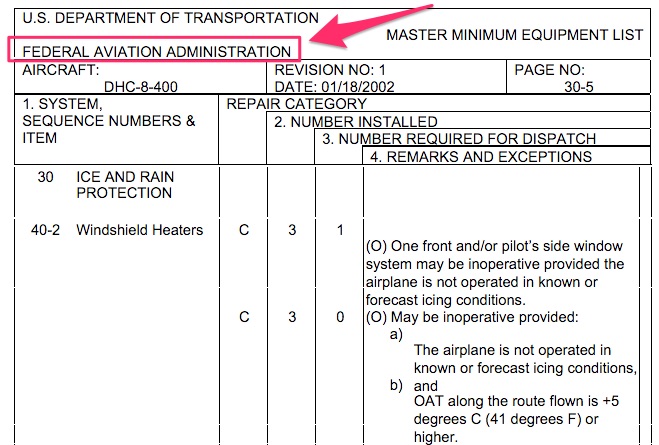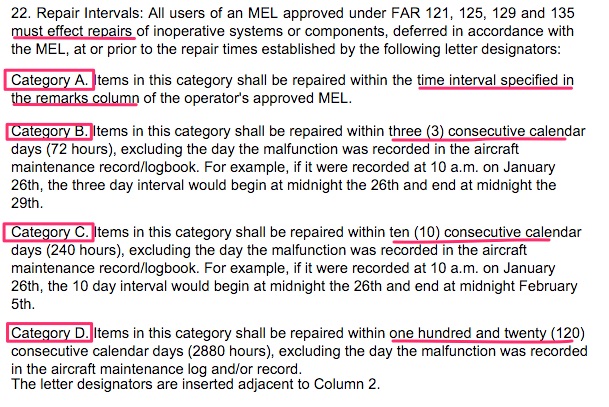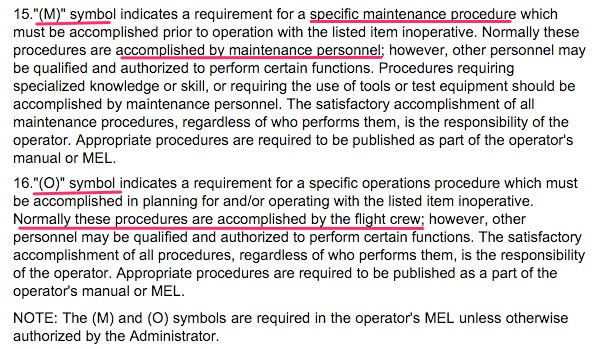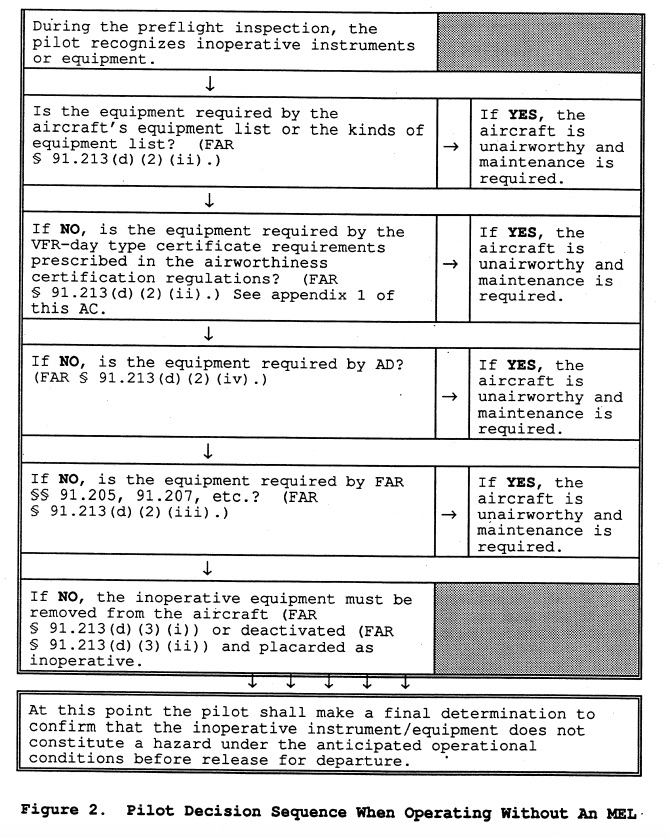
The MEL is something GA pilots won’t necessarily see until they start flying larger, more advanced aircraft. However, it’s worth knowing what they are and how they work especially if you plan on flying professionally.
I have included a decision making chart and references for Part 91 pilots operating aircraft without MELs at the bottom of this article.
So what is an MEL?
In short it allows a pilot to legally fly the aircraft even if something is broken. Normally, if something is installed in an aircraft it’s supposed to work. The MEL provides relief from that requirement.
A lot of aviation systems had redundancy built in. The MEL acknowledges even with something broken, flight can continue safely.
Check out this example of an MEL for landing lights. The MEL allows the pilot to still fly, but with restrictions.

If an aircraft has an MEL it is FAA approved. You will never find an MEL without a stamp of approval from the FAA. If it doesn’t then it’s not an MEL. I don’t know what it is, but don’t call it an MEL.
Here is the top page of an MEL with the FAA prominently displayed.

The MEL is not a carte blanch to operate the aircraft in a permanent state of disrepair. The MEL merely allows you to operate the minimum amount of time until you can repair your aircraft. MELs will include limitations on how long you can fly with something broken.
Here are the repair time limitations found at the beginning of the MEL. The first column in an MEL is the “Repair Category.” You will find a letter in the first column. Look at the example above.

You will mostly find MELs in aircraft operating under Part 121, 125 and 135. The military also uses MELs. This is not to say Part 91 operators won’t have MELs, it is just a little more unusual.
So, how do you use an MEL?
If something is broken in your aircraft, and it has an MEL, it is the FIRST thing you should pull out. You should also get a mechanic on the phone.
Look at the MEL and when you find the broken part move over to the right an read the remarks section. The remarks section will have either an (M) or (O) next to the part. Do what it says and you are on your way!


Most of the time maintenance personnel perform the “M” tasks and the flight crew performs the “O” tasks, but not always as seen in this definition found at the beginning of the MEL:

NOTE: When you need to write anything in the maintenance book, always talk with an mechanic first. This isn’t so you can figure out how to not write it up, you need to talk to them to make sure you don’t write it up incorrectly.
Pilots have screwed operations before by writing maintenance entries in such a way the aircraft is completely down. If they had talked to a mechanic first they could have written in up in a way to allow for a one time flight or flight with modifications.
Can’t find something in the MEL?
You’re out of luck.
The MEL will never contain “instruments and equipment that are either specifically or otherwise required by the airworthiness requirements under which the aircraft is type certificated and which are essential for safe operations under all operating conditions.”
In other words, if it isn’t in the MEL (like landing gear) it’s too important. You can’t fly without it. Go home until it’s fixed.
If you want to know more check out the regulation: 14 CFR 91.213
You can also read the FAA’s Advisory Circular 91-67 on Minimum Equipment Requirements for General Aviation Operations under FAR Part 91.
The AC has a very useful decision making flow chart for Part 91 pilots operating without an MEL.
